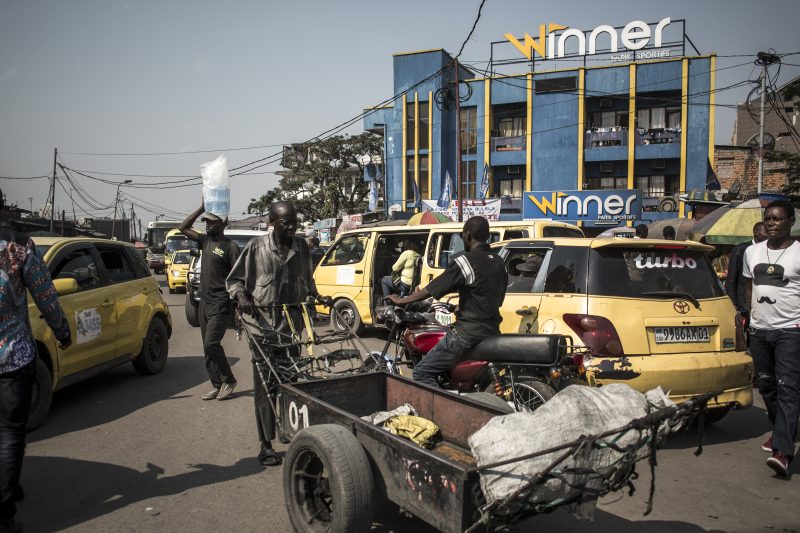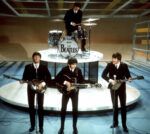Kinshasa: Commuting hell in DR Congo’s capital
Gridlocked: Yellow taxis clog the streets of Kinshasa (John WESSELS)
Kinshasa (AFP) – Cities almost everywhere have transport problems — just ask people stuck in traffic jams or overcrowded trains for their opinion.
But daily travel in Kinshasa, capital of Democratic Republic of Congo (DRC), may well have the best claim on World’s Worst Commuter Nightmare.
In a mega-hub of 13 million, the ride to work is a battle with choked, pot-holed streets and jam-packed buses, yellow taxis and motorbikes, to the backdrop of blaring horns, pollution, hawkers and accidents.
In short, a transport hell… and in a sauna-like heat.
During peak time, commuters jostle to board creaking buses or taxis where they will become intimately familiar with the anatomy and odour of their fellow humans for the next hour or two.
“Every day we’re packed in like sardines. You get there exhausted,” sighed law student Esperant Kashama.
At rush hour, it is not uncommon for average speeds to be well below 10 kilometres (six miles) per hour.
In poorer areas such as Lemba, Matete and Ndjili, it can take up to two hours to reach Gombe, the city’s business heart.
– Infrastructure –
Like Africa’s two other megacities, Cairo and Lagos, Kinshasa has failed to successfully manage the twin challenges of a growing population and weak infrastructure.
The task is only going to get worse in the coming years, for, by 2030, Kinshasa will rank as the 10th most populous city in the world, according to UN estimates.
Lacking a suburban rail network, the city is fatally dependent on the road.
President Felix Tshisekedi has floated development plans to widen vital bridges spanning the Congo River, but the scheme is already under fire, with critics saying they encroach on public spaces.
His initiative adds to a string of attempts to free up the capital’s clogged roads.
These include solar-powered aluminium robots equipped with cameras and lights to regulate the flow of traffic and send real-time images to police.
The government has also purchased dozens of buses from foreign firms to make the ride more comfortable — if not necessarily speedier — for commuters.
In the past, battered local buses were nicknamed “Spirits of Death” due to their shoddy maintenance.
The new vehicles have been baptised the more optimistic-sounding: “Spirits of Life.”
– Kickbacks –
Some transport startups have been working to address the issues, with the development of Uber-style taxi apps.
One of these, Ubizcabs, is squarely aimed at the middle classes with air-conditioned saloons costing around $40 for a run to the airport — out of reach for the vast majority of Congolese.
“We began with the middle class. We wanted to keep the same standards with different models of vehicle in order to meet the needs of the whole population,” company head Patricia Nzolantima told AFP.
The authorities have also attempted a crackdown on dodgy cab drivers in a bid to reduce robberies and abductions.
Last year, owners of taxis and taxi-buses were ordered to repaint their vehicles yellow and make sure licence plates were clearly visible.
Now the city has a wave of yellow vehicles, but Sonia — not her real name — was still a victim of a crime.
“I got into a collective taxi at the same time as some other guy. I thought he was a client. But he was an accomplice,” the student and model said.
On the back seat, the young woman was throttled and robbed of her telephone and $130 (115 euros), before being thrown out of the taxi.
“I filed a complaint,” she said. “The police asked me to pay (the equivalent of) $100 to open an investigation.”
Disclaimer: Validity of the above story is for 7 Days from original date of publishing. Source: AFP.


